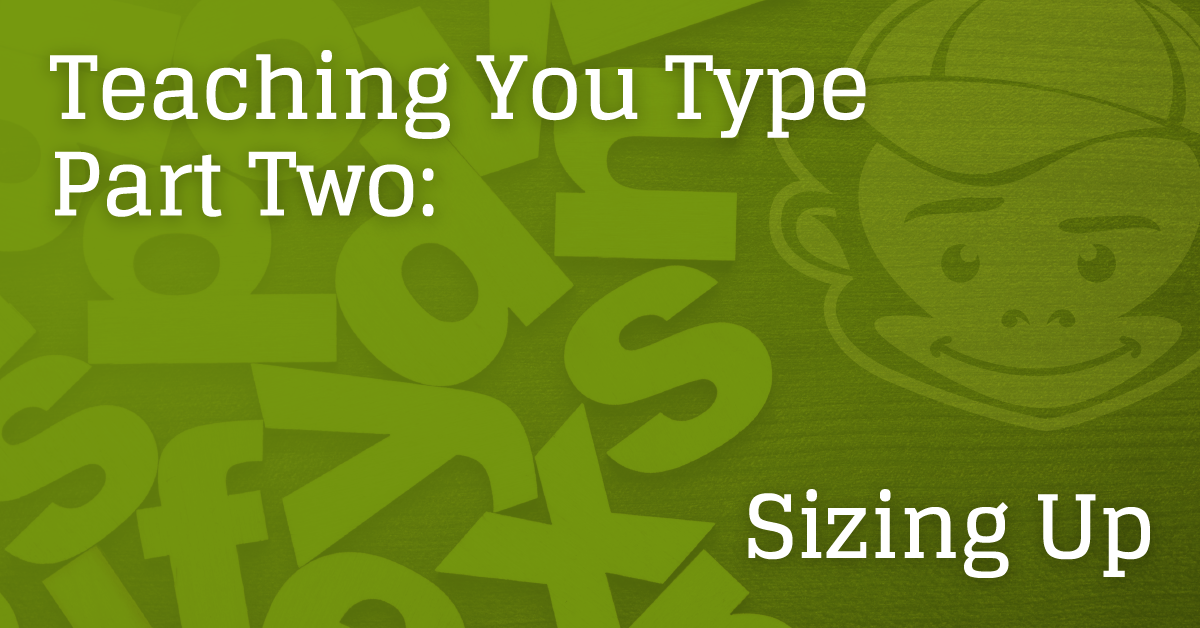Welcome back! Last time we took a look at the very basics of typography terminology. We went over the differences between a font and a typeface, sans-serif vs. script vs. serif typefaces, and how to identify each of them.
This time we’re going to take a look at the sizing of letters. Just like your body, letters have entire anatomies to them, each part having a different name, and a way to measure it. We’re going to identify the different guidelines used to measure the sizes of letters. We’ll talk about uppercase and lowercase, and where they originate.
Case by Case
You’ll be hearing the words uppercase and lowercase a lot in the following articles, so let’s get this out the way. You probably already know what they mean. Still, in case you don’t, it’s crucial that you understand them, or else you’re gonna be super confused moving forward. I’m also going to give you a little history lesson about the origin of the terms.
Uppercase
Otherwise known as capital letters, uppercase letters are the big ones. They go at the beginning of proper nouns, and sentences, and you should be using them exclusively when you’re yelling at people on Twitter.
Lowercase
The smaller forms of letters are called lowercase. You use lowercase letters when y-… Yal’know, I think you get it.
Why Cases? What gives?
Waaaay back in the day when a printer was a manual press (and not an evil machine designed to create human suffering), they placed each letter on the page manually. Like, by hand. A single printer’s shop would have thousands of little tiny metal letters. Each one was a single letter from a single typeface of a single font in a single size. Want a bigger “Q”? Well, you’ve gotta find that somewhere in the shop. Yeah. It was a long, tedious process that required extreme focus to assemble pages as quickly as possible without making mistakes.
Since capital letters aren’t used nearly as often in regular text, the printers didn’t need them right on hand. These lesser used capital letters were, therefore, placed in the case above the small letters, making them the upper and lower cases.
Line ’Em Up!
We designer-type folks like it when things line up nicely. Most of us thrive on grids, guides, and constraints. This interest extends into the realm of typography too. These are the three main “lines” you should consider when you’re using or talking about type.
Baseline
This one is a bit crazy, but hear me out. I might be about to blow your mind. Okay, here goes: There’s an invisible line that the base of letters “sit” on, and it’s called the baseline. BOOM! Crazy stuff, I know. Some letters like g, y, or p will extend past the baseline, and those parts each have a name, but we’ll come back to that in the next article.
Capline
The capline, or cap height, is the line that marks the height of capital letters in a typeface. Occasionally parts of letters might extend past it a bit. Still, for the most part, it’s the line marking the top of the capital characters.
X-Height
Some folks will tell you that x-height is to do with how tall the lowercase x is. People will tell you that it relates to how large the bodies of lowercase letters are. Well, they’re wrong. It’s about how x-tremely high you can ramp off of the Mega Ramp at the X-Games and has nothing to do with typography whatsoever.
Wait. What? Oh. Really? Do you mean I’m wrong? Okay… Well, it turns out that x-height is just how big the main body of the lowercase letters is. That’s way lamer than my idea.

Next Time
In the next article, we’re going to take a deep dive into the shapes of the letters themselves. Right in time for the Halloween season, we’re going to take a look at the alphabet’s skeletons and learn the names of each different part. Spooky sentence skeletons send shivers down my spine!





